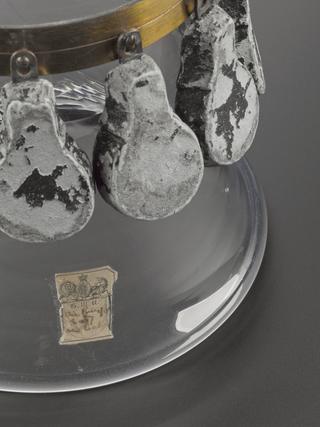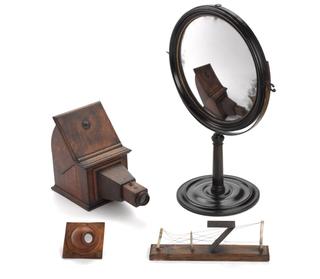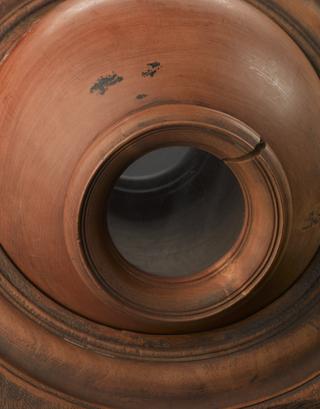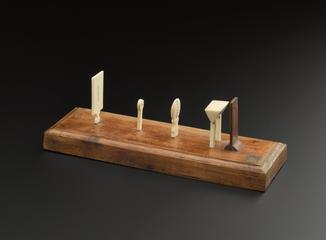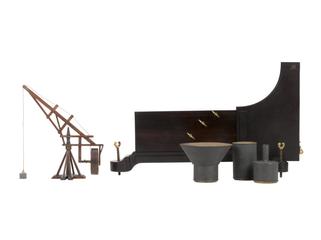
George III's compound engine
- Made:
- 1762 in Fleet Street
- maker:
- George Adams










Compound engine made by George Adams, Fleet Street, London, 1762.
George Adams,who made this engine for King George III, described it as 'one of the simplest and most elegant compound engines I have ever seen'. It combines three simple machines: two wheels and axles and a screw. The load was suspended from the axle at the base and hung through the centre of the frame. It was lifted by a 'power' on the large spoked wheel. In theory a weight 6000 times that of the applied force or 'power' could be raised but friction greatly reduced this figure in reality.
Details
- Category:
- King George III
- Object Number:
- 1927-1851
- Materials:
- brass, mahogany and paper (fibre product)
- Measurements:
-
overall: 350 mm x 295 mm x 310 mm, 3.22 kg
- type:
- compound engine
- copyright:
- Unlinked Name
- credit:
- King's College, London
